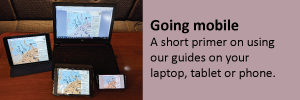Sandspits shaped by time

Spits, like sandbars and tombolos, are created by deposition rather than erosion. A spit is a stretch of beach material, usually sand or small stones, that is joined to the mainland at one end and projects out across the water.
Spits are formed where the prevailing winds blow at an angle to the coastline that results in longshore drift which over time moves sand and material along the coastline. A spit forms as the material is deposited. Spits occur when longshore drift reaches a section of headland where the turn is greater than 30 degrees.

Over time, the spit lengthens and can develop a “hook” if prevailing wind direction or water currents change farther offshore. Waves that arrive in a direction other than obliquely along the spit will halt the growth of the spit, shorten it, or eventually destroy it entirely.
A spit blocks the waves and creates a sheltered area where silt is deposited and mud flats or salt marshes eventually form. Vegetation may start to grow on the spit, and the spit can become stable, even fertile.
There are many sand spits on both sides of the Canada-US border in the Salish Sea. On sunny summer days they are a delight to visit and to stroll, sand between your toes. Here are some of our favourites.

Puget Sound has the honour of having the longest natural sandspit in the United States. Dungeness Spit stretches over five miles out into the Strait of Juan de Fuca and grows by about 15 feet a year. It’s about a five-hour round-trip hike. If you stay at the marinas in Port Angeles or in Sequim Bay, you can get there by bus. As it is not easy to access the spit by water, that is the best way to hike the long trail.
In south Puget Sound, Cutts Island in Carr Inlet has a beautiful sand beach that extends from the north end of the island. As the tide drops to reveal the spit, seals haul themselves out, with seal pups in season, so you must keep your distance if they are sunning themselves. There are mooring buoys off the island and off mainland Kopachuck Park, and anchorage is available nearby as well. It’s a popular spot for swimming and tanning.

A sandspit off the northwest corner of nearby Fox Island forms the Tacoma DeMolay Sandspit Nature Preserve. Dogs are not permitted off-leash, and visitors must leave sand, shells and claybabies in place. “Claybabies?” you ask? Yes, as tidal waters surge around the clay banks of the island they create unique formations that break away and are scattered by the waves all around Fox Island. Over time the clay shapes are rolled and rubbed by other beach rocks becoming polished and perfectly smooth. Each claybaby is unique, and Fox Island is one of the few places in the world where “claybabies” are found. Anchor just east of the bridge to explore the island, or take a dinghy or kayak from Kopachuck State Park, about 3.5 nautical miles north.

McMicken Island is a marine state park in Case Inlet where low tide offers a chance to walk across a sandy tombolo to Harstine Island and back. Anchor west of the island or pick up a buoy on either side. It’s one of our favourite places in Puget Sound; peaceful, with a secluded air.
The spit at the entrance to Vaughn Bay in the northern reaches of Case Inlet provides excellent shelter for anchoring and is a great place to stretch your legs, on the spit or in the community ashore. Entrance to the bay requires timing the state of tide and close attention to charts.
The Fisherman Bay Spit makes entering that bay on Lopez Island in the San Juans an adventure, and provides a memorable spot for an afternoon picnic in sand dunes. Trails lead from the sand spit through an old orchard and former homestead site. It’s pleasant to sit and watch boats entering and leaving the popular bay.

One of the most popular destinations in the San Juans, by road or water, is Spencer Spit. It encloses a lagoon and offers picnic tables and a picnic shelter. Mooring buoys are on either side of the spit, or anchor a short distance east off Port Stanley and visit by dinghy. There’s a reason it’s so popular; it’s beautiful!
Semiahmoo Spit in Boundary Bay is a bit out of the way for many cruisers, but with great views of Mount Baker and other snow covered peaks, eagles, ducks and cormorants, it’s a lovely place to explore. Anchor in the bay or stay at the marina to walk the spit.

At Sooke Harbour, across the Strait of Juan de Fuca, the view from Whiffin Spit back to the Olympic Mountains is dramatically beautiful in the right light. The spit walk is about 1.2 kilometres long, and you can enjoy a meal at the quaint Sooke Harbour House to add to the day’s pleasure. The anchorage north of the spit is good.
Sidney Spit is one of the best-known spits in the Salish Sea, and for good reason. The 400-hectare park is home to the nicest beach in the Victoria region. Picnickers love the spectacular views, and the extensive tidal flats and lagoon are some of the most important shorebird habitat on southern Vancouver Island and prime turf for bird watchers. The spit protects mooring buoys, a public dock and anchorage.

TIXEN is the Tsawout name for Cordova Spit at nearby Saanichton Bay on Vancouver Island. This shoreline has been home to Indigenous people for thousands of years. TIXEN is still important for plants such as barestem desert‐parsley which have long been used to treat respiratory problems. You can walk to the spit from Island View beach, being respectful of Tsawout First Nation territory, or dinghy to the spit if anchored in Saanichton Bay.
Mortimer Spit on South Pender Island is popular. The water is warm enough for a swim, or have a picnic while watching boats traverse the Pender Canal. Nearby Port Browning Marina is a great spot to stay and dinghy to the spit, or anchor south of the spit in Shark Bay if there is room. It can be reached by kayak or dinghy from Bedwell Harbour as well.

Penelakut Spit forms the southern shore of Clam Bay which is a great anchorage. The Penelakut First Nation, part of the Coast Salish confederacy known today as the Hul’qumi’num, were famous for their skills as sea lion hunters. Their main winter settlement—the largest First Nation community in the Gulf Islands—was at Penelakut Spit. It can also be reached by kayak or dinghy from Telegraph Harbour via “The Cut”.
Shark Spit, on the northern tip of Marina Island off Uganda Passage, is just a kayak paddle south of Whaletown on Cortes Island. In settled weather, anchor off the spit. It’s the site of the annual Full Moon Regatta in August. Sailors who are in the know will be aware of this unofficial and unadvertised event.

Rebecca Spit Marine Provincial Park, on the east side of Quadra Island is an excellent area for beach exploration and picnicking. Sandy beaches line both sides of the spit at Drew Harbour, another favourite anchorage. Both sides of the two-kilometre spit are walkable, but the east side contains an unusually high concentration of driftwood. The swimming is great; dogs must be on a leash and are not permitted on the beaches.
Shingle Spit, on the west side of Hornby Island, is a gravel bar that continually shifts and changes with a shell midden near its headland. Seals frequent the bay and sea lions thrive here over the winter. During the spawning season, eagles inhabit the Douglas firs around the spit and you can see them soaring out in search of herring. Anchor south of the spit, or tie up at the Thatch Roof Pub for a meal before you explore the spit. Deep-keeled vessels should be aware of the state of tide. It’s a haven for rock hounds and an easy walk to Ford Cove and connect to the network of hiking trails on Hornby Island.

At Comox Harbour is Goose Spit, or “Pelxqikw” by its Indigenous name. It was used by First Nations to collect clams and cockles in spring and to fish for salmon in winter. Pelxqikw means “round on point” and the spit forms protection for the harbour. It’s a favourite place to swim with breathtaking views to the south, east and west. On the inside is a sheltered lagoon that provides food and habitat for many migratory and resident waterfowl. Brant geese use the park as a migratory stopover from March to May every year. During those times, leashing of pets is mandatory in the park. It is a reported 165 steps to the lookout, and fire pits are available for public use.
This by no means covers all the spectacular spits in this glorious cruising region. I had no idea, until I tried to count them, that there were so many and that I would have to whittle down my list of favourites.
Hope to see you out there on a sandy point sometime soon!
Until then, stay safe.


















